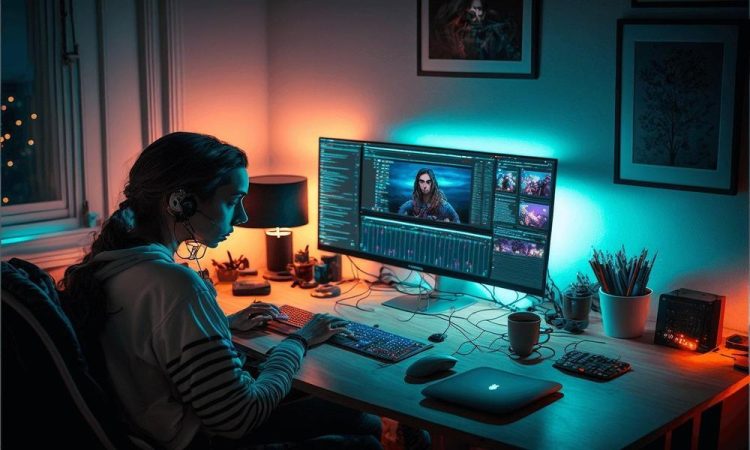
They are augmented reality (AR) overlays digital information in the real world through mobile devices and wearable hardware. While AR is often associated with games and filters, it also has powerful potential as a navigation and wayfinding technology physical and virtual spaces.
Enhanced maps and directions
One of the most straightforward uses of AR is enhancing mapping apps with overlayed directions, points of interest, and contextual cues. Apps like Google Maps already do this to some extent but imagine looking through your phone and seeing floating arrows pointing you exactly where to turn. Useful information like business names, opening hours, and reviews could also appear overlaid right onto the streetscape. Spatial computing gives traditional maps a direct real-world connection.
Immersive streetscape layering
Beyond just directions, AR layers all kinds of interactive information into the physical world. City streets and buildings come alive with historical insights, architectural details, photography, and video overlays. Walking through a city, you could learn about city planning, access Wikipedia-style entries on landmarks, and see how spaces looked in the past. For example, public spaces could have guided audio tours with narration automatically triggered by movement through marked zones. Parks could have themed educational pathways for kids. Businesses layer interactive product demos and promotions. Adventurers could embark on choose-your-own-adventure trails.
Accessible navigation and mapping
For the visually impaired, AR navigation assistance has already begun replacing safer and more empowering handheld guidance. Other accessibility applications include visual impairments that magnify or annotate hard-to-see street obstacles and signs. AR also provides real-time translating subtitles for the hearing impaired. The same multiplayer mechanisms would allow rally races and augmented geocaching adventures. The physical world becomes an arena for social play.
Immersive transit and ridesharing
Getting around also is transformed by AR in vehicles. Imagine rideshare cars with AR freelancers dashboards displaying optimal routes and points of interest along the way. Public transit could layer digital wayfinding, games, and language lessons onto bus windows. Providing passengers with individualized AR experiences makes transit more engaging and efficient.
Seamless indoor/outdoor navigation
GPS struggles indoors, but AR’s spatial sensing bridges outdoor and indoor spaces into one navigable canvas. Shopping malls and airports are instantly navigable by overlaying marker-based directions, store locators, and interactive maps. Combining wide-area GPS and close-range spatial data is the key to continuous wayfinding.
Virtual landmarks and street signage
Ubiquitous invisible digital landmarks and street signs are viewable through AR may gradually replace cluttered physical signage. Retail stores have virtual welcome signs only visible once within a geofence. Hazard warnings and parking instructions are virtually displayed with precision only when relevant. Physical signs are reduced by relying more on timely AR cues.
Gamified advergaming and navigating
Gamification drives user participation and navigation activities like scavenger hunts, geocaching, and interactive city tours could all be spun into AR games. Brand sponsorships and advertising offset development costs while making navigation more exciting. For example, competitions for bonus virtual rewards during sponsored challenges. Navigation becomes play. The potential of AR navigation is only beginning to be tapped, but it’s clear that overlaying context, social sharing, games, and accessibility features reinvent how we traverse and comprehend the spaces around us. Moving forward, AR wayfinding will increasingly drive us out into the world rather than distract us from it.
